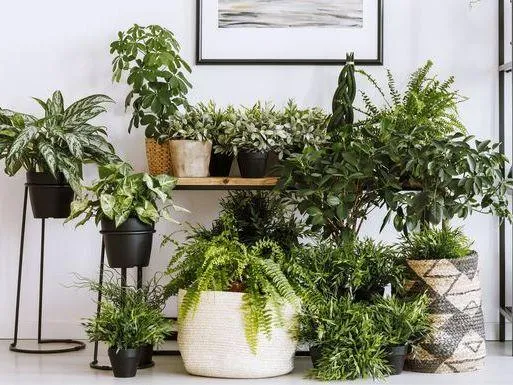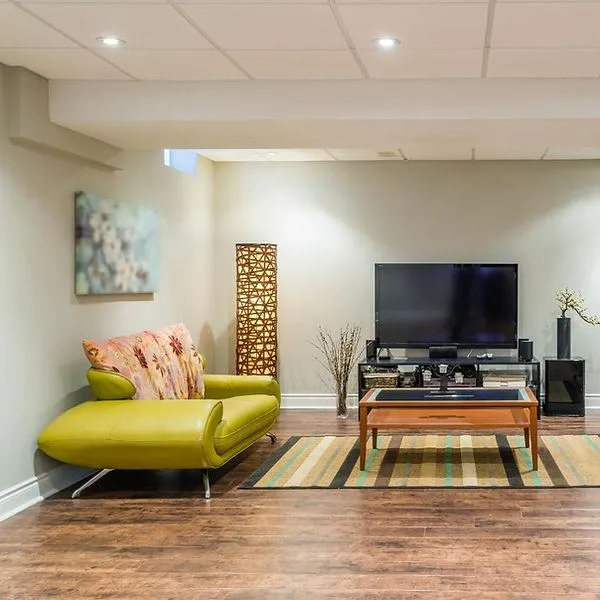The Coolest Hanging Plants to Enhance Your Home
If you’re looking to spruce up your home with some vibrant foliage but don’t have much space, hanging plants are the way to go. From my experience living in tiny apartments, hanging pots allowed me to utilize empty walls and ceilings in a way that floor plants simply couldn’t match. In this article, I’ll cover some of the coolest and most trendy hanging plant options and hopefully answer any questions you may have!
Pothos
Arguably one of the hardiest and easiest to care for hanging plants is pothos. This trailing vine can grow extremely long given the space but is perfectly content to hang out in a small pot. Its heart shaped leaves come in various colors like green, yellow, and variegated. Pothos is super low maintenance—I often forget to water mine for over a week and it doesn’t seem to mind! Kind of a tough plant there. It’s also quite affordable, making it perfect for beginners. Do pothos vines ever actually end? They just keep growing and growing endlessly, doesn’t it seem?
Philodendron
Another easy care trailing vine is philodendron. It comes in many varieties beyond the classic heart leaf type like brasil, micans, pink princess, and others. Philodendrons will climb or trail down depending on how you train them. I have a pink princess cutting in a hanging basket and the new growth is just stunning! At the same time, philodendrons are delicate enough to require somewhat consistent watering and lighting—not a plant to forget about for weeks. But with some trial and error you’ll figure out what it likes, as all plants have their own personality type.
String of Pearls
Moving into the realm of succulents, string of pearls is equal parts cool and intriguing. Its delicate oval leaves resemble strands of pearls dangling down. String of pearls does best in bright indirect light and well draining soil. Watering about once every two weeks should keep it happy. Sometimes when a plant looks this unique, you sort of want to just play with it all day, you know? Run your fingers across the cool smooth pearls or arrange and rearrange them endlessly. But resist the urge! Let this little gem do its thing.
Spider Plant
Spider plants are fun dangling plants that produce baby spiderettes on long stems, capable of growing into new plants. Their grassy foliage comes in various colors. Spider plants thrive on neglect—you can forget to water them for an impressively long time. They’re practically indestructible and always manage to bounce back. Not kidding, I think spider plants may secretly be aliens or something with regenerative powers! I had one that survived a toxic roommate, months buried under clutter, and a cross-country move. It now rules a massive hanging pot, probably plotting world domination.

Pilea Peperomioides
Also known as the Chinese money plant, pilea peperomioides features round succulent-like leaves in elegant piles. It does well in medium to bright indirect light. Water when the top inch of soil is dry. Pileas grow more lush and round with occasional fertilizer. The leaves come in different shades of green depending on the light conditions. Isn’t it kind of mesmerizing watching the pilea leaves stack so perfectly? Like satisfying tile puzzle pieces. And who doesn’t love the name “Chinese money plant”? Sounds kinda lucky, amirite? You should totally try growing one, I think you’d vibe with its aesthetic.
Purple Waffle Plant
With its textured heart shaped leaves splashed in shades of purple, Hoya pubicalyx or purple waffle plant is a real showstopper. It thrives in hanging baskets and produces clusters of waxy white flowers. Like other hoyas, it prefers bright indirect light and slightly drier conditions between waterings. The leaves have such remarkable ribbed patterns, you could spend a long time just tracing them with your fingers. Not gonna lie, I may or may not have been slightly obsessed with my purple waffle plant right after getting it. Who could blame me, look at those cool leaves!
English Ivy
Last but not least is classic English ivy, an enduringly popular hanging plant for its ability to trail extensively. It flourishes in medium to low light and average indoor humidity. Water whenever the top inch is dry. English ivy will climb any surface it can attach to, so be wary if you have young children or pets. On the upside, it purifies indoor air! Get a big full pot of English ivy and just watch it grow and flow over the sides endlessly. Kinda therapeutic, like being in a lush Ivy-covered classroom without the homework. Not a bad way to relax if you ask me.
In summary, those are some of the coolest hanging plant options worth considering for your home. Whether you want trailing vines, smaller succulent varieties or foliage classics, there is a great fit that will add visual interest without taking up much space. Also remember to look locally at plant shops and facebook marketplace—you can often score excellent clippings or cuttings from friends for next to nothing. It’s become sort of a fun hobby trading plant cuttings on the cheap.
When caring for your new hanging plants, follow these general tips:

- Water whenever the top inch of soil is dry
- Provide medium to bright indirect light
- Use well-draining potting soil specifically for houseplants
- Repot only when roots emerge from the drainage holes
- Trim trailing vines periodically to encourage bushier growth
- Fertilize during the growing season for maximum lushness
Consistent care will keep your hanging plants happy and thriving for years to come. Of course, occasional mishaps are bound to happen—we’re all human, after all. But don’t stress too much if you forget to water every once in a while. Most plants can bounce back from short-term neglect. You’ll get the hang of reading their needs as you care for them.
One final tip: having houseplants or a green thumb does not equate to a green clean home. Dirt and debris happens no matter how tidy you try to be! Leaves will inevitably drop, and pots may get dusty. Accept that part of plant parenthood is regular tidying and destressing about minimal messes. If you’re adopting hanging friends, come to terms with their quirks in advance.
I hope this overview of awesome hanging plants provided a good starting point for your indoor jungle. Feel free to ask in the comments if you need any clarification or have additional plant questions. Wishing you the best of luck decorating your space with some cool new trailing foliage friends!
Top Hanging Plants for Your Home
| Plant | Light Needs | Watering | Size |
|---|---|---|---|
| Pothos | Low to Bright Indirect Light | Allow Soil to Dry Slightly Between Waterings | Trails Up to 8 Feet |
| Philodendron | Low to Medium Light | Water When Top inch of Soil is Dry | Can Grow up to 6 Feet |
| English Ivy | Medium to Bright Indirect Light | Water When Top of Soil Feels Dry | Can Cover Large Areas |
| Spider Plant | Bright Indirect Light | Allow Soil to Dry Between Waterings | Trails Up to 3 Feet |
| Peperomia | Low to Medium Light | Water When Top of Soil is Dry | Ranges in Size |
FAQ
-
What types of plants grow well hanging?
Most any type of plant can grow as a hanging plant basically. Pothos, philodendron, english ivy, and purple waffle plant are some of the easiest hanging plants to care for.
-
How do I water hanging plants?
You’ll need to water hanging plants from above once the soil becomes dry. Carefully lift up the plant and water thoroughly until it drains out the bottom holes of the pot. It’s best to water when the soil is just about dry to keep the plants happy.

-
Do hanging plants need fertilizer?
Most folks don’t fertilize hanging plants regularly, but it certainly doesn’t hurt. In spring and summer you may wish to use a dilute water-soluble fertilizer every few weeks if growth seems sluggish. Fertilizer improves leaf color and produces more vigorous vines and foliage. Always follow label directions for safety.
-
How do I pick the right pot for a hanging plant?
Pots for hanging plants should have drainage holes and be large enough to accommodate healthy root growth but not too huge. Terra cotta and plastic work well. Consider the pot’s weight too – too heavy can hamper hanging. Maybe try some lightweight pots made for hanging to evenly disperse the weight.
-
Will bugs be an issue with hanging plants?
Most hanging plants will have fewer bug problems than those grown on the ground. Spider mites are possibly the most common pest. Keep an eye out for webbing between leaves signaling an infestation. Hosing off plants regularly helps deter bugs. Some swear by neem oil or insecticidal soap sprays too for prevention.
-
How do I display hanging plants beautifully?
For an amazing display, choose pots in complimentary colors and textures. Group different leaf shapes and textures together like heartleaf philodendron with English ivy for visual interest. Varying heights adds dimension too. Hang them singly, create tangled lush clusters – get creative! Plants sort of like hanging out with buddies.
-
Where is the best spot to hang plants indoors?
Windows are ideal for drawing in natural light from outside. Bright indirect sunlight works great for most any hanging plant. Spaces over a table or above an entry are also popular spots for decorative greenery. Avoid direct hot sun beam exposure or very dark corners and hanging plants will do amazing basically!

